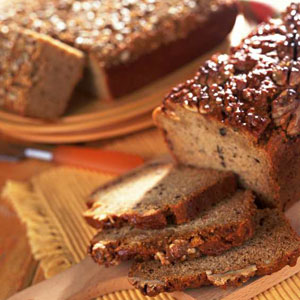What to do if you or a member of you family is gluten or wheat intolerant? Follow the following tips and then make some of these delicious wheat-free recipes below.
About wheat allergies
If a person is allergic to wheat, it can affect almost any part of the body, causing anything from minor to acute symptoms, such as runny nose, itchy ears, sore throat, puffy eyes and a tight chest. When there’s an adverse reaction to food, but tests for an allergy are negative, it is called a food ‘intolerance’.
For both wheat allergy and gluten intolerance, foods such as bread, pies, pizzas and baked puddings are off the menu. Gluten is a protein found in these foods and causes damage to the absorbing area of the intestines. This interferes with the digestion and absorption of nutrients vital for good health and can even be life threatening. It can cause a wide variety of symptoms and sometimes these symptoms aren’t obvious, so it can be difficult to diagnose. Symptoms may also take long to occur, making it difficult to pinpoint the problem, unlike an allergy where symptoms typically occur very soon after eating the food.
While there is no cure, sticking to a strict gluten-free diet can prevent almost all complications caused by the disease. If you suffer from an allergy or food intolerance, it’s important to get advice from a dietician, who will give practical guidelines and help to fit your specialised diet in with normal eating habits.
What to avoid:
All forms of wheat, rye, barley and oats, pasta, cakes, bread, biscuits, pastries, some sauces and soups, certain canned and processed foods, etc. Some people are not affected by oats, but rather avoid it and ask your doctor’s advice.
Why processed foods?
Many manufacturers use flour as a thickening agent or as a cheap filling ingredient (eg, in stock cubes, mixed spices, spreads or ice cream).
It’s essential to check the labels on all processed foods and avoid any containing the following: barley, cereal binder, cereal filler, cereal protein, edible starch, food starch, malt, rye, rusk, vegetable protein and wheat flour.
Beers, lagers, ales and stouts may contain small amounts of gluten.
Certain baking powders contain gluten.
What to eat
Gluten-free flours:
Brown and white rice, potato, chickpea, soya, split pea, maize, arrowroot, sago and buckwheat flours don’t contain gluten. They’re available at health shops, some chemists and the better supermarkets. For thickening agents, use cornflour or arrowroot to thicken soups, sauces and casseroles.
Fibre:
Because common sources like wholewheat breads and breakfast cereals aren’t gluten free, you need to up your intake of fresh fruit and vegetables, pulses, lentils and brown rice. Soya bran can also be added to meals to increase the fibre intake.
Gluten-free products:
Gluten-free pasta and noodles made from potato and rice and certain Asian noodles like rice noodles are good. Gluten-free cookies, cookie mix, muffin mixes, rice cakes and rice crackers are available from health shops and selected supermarkets.
Mealie meal is easily available and gluten-free. Use it to make corn bread or cookies and try out polenta as an alternative to bread. Rice flour can also successfully be used in baking, but the results may be a little dry. By adding moist ingredients such as fruit, carrots or nuts this problem can be fixed.
Also keep in mind that gluten-free flours do not have the capacity to stretch or rise like wheat flour, so the textures of gluten-free breads are more dense. These breads are also more successful baked in a shallow baking tin, rather than a loaf tin. Our savoury bread recipe (see link below) is very tasty and ideal to serve with soups or casseroles. It’s also perfect for slicing and making sandwiches. The soya flour makes it rich in protein and a great choice for vegetarians.
Now you know a bit more about eating and baking wheat-free, go to our advanced search page and choose Gluten Free from the Special Diets dropdown. You can also combine searches here, like for instance selecting Starters under Recipe Type and Gluten Free, again from the Special diets menu.
5 things to make without wheat:

